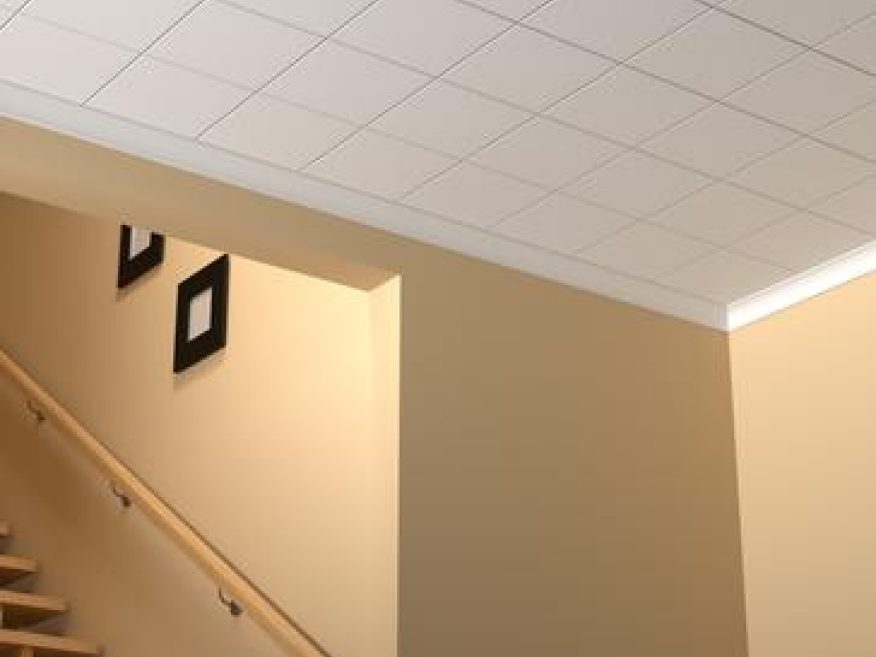Ceiling tiles play a crucial role in both the aesthetic and functional aspects of a room. Among the various options available, wood fiber ceiling tile stand out for their sustainability, durability, and versatility. This comprehensive guide will explore everything you need to know about wood fiber ceiling tiles, from their benefits and applications to installation tips and maintenance.

What are Wood Fiber Ceiling Tiles?
Wood fiber ceiling tiles are made from a combination of wood fibers, binders, and other natural materials. These tiles are designed to be eco-friendly, offering a sustainable alternative to traditional ceiling materials. They come in various designs, textures, and finishes, making them suitable for a wide range of interior design styles.
Read too: A Comprehensive Mr Cool Ceiling Cassette Review: Unveiling Excellence
Benefits of Wood Fiber Ceiling Tiles
Wood fiber ceiling tiles offer numerous advantages, making them an excellent choice for both residential and commercial spaces. Here are some of the key benefits:
1. Sustainability
One of the most significant advantages of wood fiber ceiling tiles is their sustainability. They are made from renewable resources and often include recycled materials. This makes them an eco-friendly choice for environmentally conscious homeowners and businesses.
2. Aesthetic Appeal
Wood fiber ceiling tiles are available in various designs, textures, and finishes, allowing you to create a unique and stylish look for any room. Whether you prefer a rustic, modern, or classic style, there’s a wood fiber ceiling tile to match your taste.
3. Durability
These tiles are known for their durability and resistance to moisture, mold, and mildew. This makes them ideal for use in areas with high humidity, such as kitchens, bathrooms, and basements.
4. Acoustic Properties
Wood fiber ceiling tiles have excellent sound-absorbing properties, making them a great choice for spaces where noise reduction is important. They can help improve the acoustics in rooms like offices, classrooms, and home theaters.
5. Easy Installation
Wood fiber ceiling tiles are relatively easy to install, whether you’re doing it yourself or hiring a professional. They can be mounted directly to the ceiling or installed as part of a suspended ceiling system.
Applications of Wood Fiber Ceiling Tiles
Wood fiber ceiling tiles are versatile and can be used in various settings. Here are some common applications:
1. Residential Spaces
In homes, wood fiber ceiling tiles can enhance the look of living rooms, bedrooms, kitchens, and bathrooms. Their moisture-resistant properties make them particularly suitable for kitchens and bathrooms, where humidity levels are often high.
2. Commercial Spaces
Businesses can benefit from the aesthetic appeal and acoustic properties of wood fiber ceiling tiles. They are commonly used in offices, retail stores, restaurants, and hotels to create a pleasant and professional environment.
3. Educational Institutions
Schools and universities can use wood fiber ceiling tiles in classrooms, lecture halls, and libraries to improve acoustics and create a comfortable learning environment.
4. Healthcare Facilities
Hospitals and clinics can take advantage of the hygienic properties of wood fiber ceiling tiles. These tiles are resistant to mold and mildew, making them suitable for use in patient rooms, waiting areas, and examination rooms.
Installing Wood Fiber Ceiling Tiles
Installing wood fiber ceiling tiles can be a straightforward process if you follow the right steps. Here are some general guidelines to help you get started:
1. Measure and Plan
Before you begin, measure the dimensions of your ceiling to determine the number of tiles you need. Plan the layout to ensure a symmetrical and balanced appearance.
2. Prepare the Ceiling
Ensure the ceiling surface is clean, dry, and free of any debris. If you’re installing the tiles as part of a suspended ceiling system, set up the grid according to the manufacturer’s instructions.
3. Cut the Tiles
Use a utility knife or a saw to cut the tiles to the required size. Make sure to wear protective gear, such as gloves and safety glasses, while cutting.
4. Install the Tiles
If you’re mounting the tiles directly to the ceiling, apply adhesive to the back of each tile and press it firmly into place. For a suspended ceiling system, simply lay the tiles into the grid.
5. Finishing Touches
Once all the tiles are installed, check for any gaps or uneven areas. Make any necessary adjustments to ensure a smooth and professional finish.
Maintaining Wood Fiber Ceiling Tiles
Proper maintenance can help extend the life of your wood fiber ceiling tiles and keep them looking their best. Here are some tips for maintaining your tiles:
1. Regular Cleaning
Dust and dirt can accumulate on the surface of the tiles over time. Use a soft cloth or a vacuum with a brush attachment to gently clean the tiles regularly.
2. Moisture Control
While wood fiber ceiling tiles are moisture-resistant, it’s still important to control humidity levels in your home. Use dehumidifiers or exhaust fans in areas with high humidity to prevent mold and mildew growth.
3. Repair and Replacement
If a tile becomes damaged, it’s usually easy to replace. Simply remove the damaged tile and install a new one in its place. Keep a few extra tiles on hand for quick repairs.
Wood Fiber Ceiling Tiles: A Smart Investment
Choosing wood fiber ceiling tiles is a smart investment for any homeowner or business. Their combination of sustainability, durability, and aesthetic appeal makes them an excellent choice for a wide range of applications. By following the installation and maintenance tips provided in this guide, you can enjoy the benefits of wood fiber ceiling tiles for years to come.
Conclusion
Wood fiber ceiling tile offer a blend of sustainability, aesthetic appeal, and practicality that makes them an ideal choice for a variety of settings. Whether you’re looking to enhance the look of your home or improve the acoustics in a commercial space, these tiles provide a versatile and eco-friendly solution. By understanding their benefits, applications, and maintenance requirements, you can make an informed decision and enjoy the many advantages that wood fiber ceiling tiles have to offer.